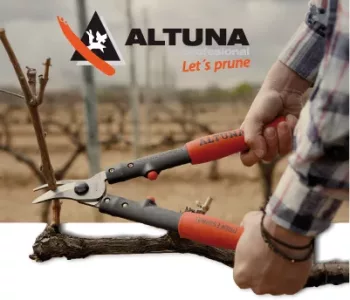Optimización de palabras clave en Amazon
Si quieres dedicarte al mundo de Amazon y destacar con tus productos, lo más importante es la optimización palabras cl...

Nozama Solutions es la primera plataforma tecnológica integral de gestión de cuentas Amazon en el mundo
Somos la Agencia Amazon y primera Plataforma integral de gestión de Cuentas Amazon en Europa. En Nozama encontrarás todos los servicios necesarios para vender más en Amazon y ser rentable. Más de 12 Años de Experiencia ayudando a marcas a gestionar su canal Amazon de la mejor manera posible.

Somos más que una Agencia Amazon, somos el Partner perfecto para alcanzar tus objetivos. Trabajaremos contigo para llevar tu cuenta Seller al siguiente nivel. Nuestro enfoque personalizado y soporte experto son la clave para tu éxito en Amazon. ¡Haz equipo con nosotros y ve crecer tu negocio!

¿Tu cuenta vendor no está rindiendo como esperabas? Nozama es la única agencia Amazon 360 especializada en cuentas vendor con más de 12 años de experiencia gestionando cuentas propias y de terceros. Si sientes que no estás aprovechando al máximo tu cuenta, solo tienes que contactarnos.

Con Nozama, la gestión de Amazon Advertising va más allá de simples anuncios. Creamos estrategias publicitarias integrales que conectan tu marca con el público objetivo trabajando todas las fases del funnel de Advertising aumentando las ventas y mejorando la presencia de tus productos en Amazon. Deja que nuestros expertos en Amazon conviertan tus Ads en una herramienta de crecimiento y rentabilidad

Creamos y mejoramos tus fichas de producto con técnicas de SEO avanzadas específicas para Amazon y contenido atractivo, aumentando la visibilidad y las conversiones. Con un enfoque personalizado, mejoramos la visibilidad de tus productos. Desde la selección de palabras clave hasta la creación de descripciones convincentes, trabajamos para que tus productos sobresalgan y vendan más.
Estas marcas ya la encontraron y hoy están triunfando en Amazon gracias a nuestros consultores Amazon ¿Quieres ser nuestro próximo caso de éxito?


Incremento de ventas YoY gracias a que pudimos detectar los errores del catálogo y ejecutar una estrategia de posicionamiento tanto orgánica como en Advertising.

Apertura de 5 plataformas internacionales y traducción nativa de un catálogo de más de 400 productos organizando la logística y la atención al cliente en diferentes idiomas


Conseguimos disminuir en un 90% las devoluciones de la cuenta realizando un completo análisis de las reseñas de producto y adaptando la ficha de producto al cliente potencial.


Estrategias avanzadas de Amazon Advertising generando una matriz de ASINS de la cuenta basada en el ciclo de vida del producto y ejecutando una estrategia full funnel faseada
Mejoramos considerablemente los ratios de conversión de tus productos con una nueva imagen de marca y de producto diseñada exclusivamente para Amazon. Dale una nueva vida a tus productos en Amazon con páginas A+ y Stores que enamoren a tus clientes. Somos la agencia Amazon más creativa y con la que mejores resultados obtendrás.
Y no podría faltar el blog para vendedores de Amazon donde encontrarás los mejores trucos y tips para Amazon
Si quieres dedicarte al mundo de Amazon y destacar con tus productos, lo más importante es la optimización palabras cl...
En el marketplace más grande del mundo, la gestión logística es un aspecto clave para mejorar la satisfacción del cl...
Como ya sabes, Amazon tiene diferentes tipos de anuncios: Sponsored Product, Sponsored Brand y Sponsored Display. Pero h...
En Amazon, los descuentos son una estrategia esencial para atraer a los clientes y aumentar las ventas. Desde ofertas fl...
Como bien sabrás, en el mundo del Amazon, la competencia es muy fuerte y la confianza del consumidor es clave. P...
Cada vino tiene una historia, y Amazon te ofrece el escenario perfecto para contarla. Pero, ¿Cómo se traduce la riquez...
¿Alguna vez has sentido que tus anuncios de Amazon guardan un secreto que no logras descifrar? Ya has visto 27 videos d...
¿Has escuchado alguna vez eso de que cuanto más vendes más pierdes? Parece absurdo, pero te puedo asegurar que no es ...
En mi experiencia, la planificación del inventario en Amazon, especialmente durante las temporadas altas, se convierte ...
Trabajé durante varios años en una distribuidora de productos informáticos que aparte de vender en nuestro ecommerce,...
¿Alguna vez has pensado cuánto podrías aprender de tus competidores en Amazon? Muchos vendedores pasan por alto esta ...
Vender calzado en Amazon no es una tarea fácil de inicio, nos encontramos con una categoría en constante crecimiento, ...
Es un tiempo festivo, se acaba el año y queremos daros información curiosa para entretener, más que un post con infor...
Amazon Ads por fin ha lanzado una actualización en su consola de publicidad que ofrece a los anunciantes una may...
El mundo del comercio electrónico está en constante evolución, y una de las tendencias más efectivas en la ac...
En el vertiginoso mundo del comercio online, donde la competencia es intensa y las estrategias de mercado están ...
En la búsqueda por destacar tus productos en el competitivo mundo de Amazon, la visibilidad es la clave del éxito. A p...
En la era digital, la conveniencia y la accesibilidad son clave para una experiencia de compra perfecta. Y Amazon...
Seguro que estás más que familiarizado con las compras online y que Amazon es uno de tus referentes en este sec...
La calidad de los productos es fundamental en el momento de realizar compras en cualquier plataforma online, y Am...
Es difícil, a día de hoy, conocer a alguna persona que no sepa lo que es Amazon o que no lo haya usado alguna.....
Amazon es una plataforma en la que todos tenemos un lugar: compradores, vendedores, grandes negocios, pequeñas e...
¡Atención, amantes de las compras online! Amazon ha dado un gran paso en la lucha contra las falsificaciones co...
La etapa universitaria es un viaje emocionante lleno de descubrimientos, crecimiento y desafíos. Sin embargo, no...
¿Qué es el Dropshipping? El dropshipping es una forma de negocio que consiste en vender un producto cumpliendo el pape...
Para cualquier marca o vendedor, establecerse en Amazon es una oportunidad inigualable al alcanzar a millones de ...
Si bien la comodidad de poder devolver un artículo sin coste alguno ha sido una ventaja apreciada por los client...
Con millones de productos disponibles en Amazon, encontrar exactamente lo que buscas puede parecer abrumador. C...
¿Eres de los compradores entusiastas que siempre busca el mejor precio sin renunciar a la calidad? Si es así, e...
Hemos comprobado que, en los últimos años, las opciones para disfrutar de programas de televisión, series o pe...
¡Preparados, listos, prueba! En el apasionante mundo de las compras online, la Agencia Nozama te cuenta como Ama...
Amazon es el líder de las plataformas online de compras. Millones de productos se venden a diario en esta plataf...
Todo consumidor debe prestar especial atención a las posibles estafas o suplantaciones de identidad en sus proce...
Después de experimentar un impulso en las ventas motivado por la creciente demanda en línea y la búsqueda de d...
Son muchas las cosas que debes tener en cuenta a la hora de publicar tus productos y empezar a venderlos en Amazon, pero...
Amazon es, como todos sabemos, una de las plataformas de comercio electrónico más utilizadas del mundo. Este é...
Son varios los factores que determinan y definen el gasto final que un vendedor debe asumir a la hora de comercia...
Comprar en Amazon se ha vuelto una práctica muy popular, y es que muchos recurrimos al gigante del e-commerce para real...
Lanzar un nuevo producto en Amazon puede ser un proceso emocionante y desafiante. Aunque parezca una tarea sencilla, req...
Todo proceso de comercialización dentro de Amazon requiere de una extensa lista de pasos por los que se ha de pa...
En el mundo de los negocios online, Amazon se ha establecido como el marketplace principal. La compañía cuenta ...
Desde Amazon Web Services se ha desarrollado la implantación de la IA y del aprendizaje automático para mejorar...
Han pasado casi 30 años desde que el mundo vio nacer a Amazon, el gigante del comercio electrónico. Hoy día re...
A pesar de que Amazon posee un catálogo muy extenso, la realidad es que no se puede vender toda clase de product...
Gracias a las herramientas de Amazon podrás recopilar multitud de datos e información acerca de tus productos y...
Ingresar al mundo de las ventas en Amazon abre un abanico de oportunidades para potenciar tu presencia en el come...
Conoce cómo Amazon Ads te ayuda a conectar y tener un impacto real y significativo en tus clientes a través de ...
Las redes sociales son una de las herramientas más poderosas que hay actualmente para fidelizar audiencias y para crear...
Tener un control exhaustivo y minucioso de las facturas emitidas y, sobre todo, de las que faltan por emitir es c...
El CES es el evento tecnológico más importante a nivel mundial, donde se presentan todas las novedades que van ...
Esta modalidad de marketing permite enviar mensajes a una base de datos de contactos de manera automática y pers...
Como en todo lo relacionado con Amazon, la satisfacción del cliente es lo más importante y por este motivo hace...
La comodidad de recibir los paquetes al día siguiente en tu casa muchas veces se ve enturbiada por la posibilida...
Existen multitud de técnicas y de maneras de hacer que tu público objetivo llegue a tu tienda dentro de Amazon, pero l...
A pesar de la gran relevancia que ha adquirido Amazon en la manera de comprar de los consumidores, gran parte del tráfi...
Este tipo de medidas afectan de manera económica a los vendedores con cuentas Vendor que incumplen algún punto ...
Como Vendor, has de enviar tus productos a los almacenes de Amazon, pero este proceso no es baladí y los ASN de ...
A la hora de gestionar un marketpalace es fundamental que tengas controladas las métricas que detallan el estado...
Para poder vender en las diferentes tiendas de Amazon es necesario adaptar los contenidos al lenguaje de cada pa�...
Con la llegada del ecommerce, una buena imagen es uno de los factores más importantes en el anuncio de un produc...
Este servicio de procesamiento de pagos desarrollado por la compañía de Jeff Bezos cambia por completo la exper...
Amazon Web Services (AWS) engloba un gran número de servicios que permiten almacenar gestiones o desarrollar aplicacion...
De entre todos los servicios financieros de Nozama, el factoring es el que más facilidades aporta a nuestros cli...
Se trata de una herramienta que busca encontrar el equilibrio del inventario del que dispones en relación con tu...
Uno de los principales problemas de muchos vendedores es que las visitas a sus productos no se traducen en ventas...
La compañía de Jeff Bezos no solo ha conquistado el mundo con su marketplace o con sus producciones audiovisual...
Son recursos educativos para que las marcas, empresas y emprendedores aprendan a tener éxito en Amazon. La plata...
Una de las últimas novedades del gigante del comercio electrónico es la posibilidad de ajustar los precios de m...
La compañía de Jeff Bezos tiene plenamente operativo su proyecto de venta de medicamentos de manera regulada. El servi...
Esta época es, probablemente, la más importante, porque aúna en poco tiempo varias fechas en donde el gasto se dispar...
La última iniciativa de la compañía de Jeff Bezos está destinada a las pequeñas tiendas que de manera simultánea v...
Anteriormente, este contenido estaba reservado a los Selling Partners estratégicos de Amazon. Aumentan la tasa de conve...
Este servicio es perfecto para aquellos artistas que quieren vender sus creaciones en la plataforma sin asumir los incon...
Te explicamos cómo vender tu libro en Amazon en 6 pasos. Una gran oportunidad de negocio para abrir tu cuenta co...
Permite crear anuncios en formato display, audio y video. Los anuncios de audio son el formato más demandado por...
El centro logístico de San Fernando de Henares fue el primero que abrió la compañía en España, mientras que ...
Descubre las ventajas que esconde el Dayketing y aprovéchalas al máximo. 6 consejos que te ayudarán a preparar...
Esta herramienta de análisis basada en la nube permite personalizar los informes como nunca antes para mejorar la toma ...
Este producto envía las métricas y la información sobre las campañas de Amazon Ads prácticamente en tiempo r...
Dentro del panorama del comercio electrónico las opiniones son un factor determinante de compra para el usuario ...
Se trata de una fusión entre los Reels de Instagram y los Shorts de Youtube La plataforma tecnológica busca p...
En septiembre aumenta considerablemente las ventas en Amazon con la vuelta al cole Lanzar campañas de amazon ads...
La compañía de Jeff Bezos trabaja constantemente en desarrollar e implementar tecnologías que faciliten la vid...
La compañía de Jeff Bezos anuncia la adquisición del mayor y más famoso fabricante de robots domésticos del ...
La red social más recurrente para los jóvenes Tik Tok Ads, nueva apuesta para las empresas TikTok: Una Plataforma en A...
Vender en diferentes regiones del mundo puede aumentar tus ganancias y ampliar tus oportunidades de negocio Aprov...
Desde mediados de este año 2022, Amazon ha lanzado este nuevo servicio que permitirá a millones de clientes Pri...
Los meses de verano son probablemente los más deseados y esperados de todo el año. No obstante, si eres un vend...
El gigante de la moda asiático, que se ha hecho un hueco en los armarios de millones de personas en todo el mund...
Con la llegada de Amazon “Prueba primero, paga después”, el gigante del comercio electrónico ofrece a sus c...
Soluciones para promocionar tus productos con Amazon Advertising Formatos para hacer publicidad con la principal ...
•Descubre los productos top ventas de esta temporada • Elabora una estrategia de marketing para llegar a tu c...
Crear un programa de fidelización de éxito es la mejor estrategia de marketing Diseña un modelo de negocio ada...
Las acciones realizadas por parte de las organizaciones y empresas pueden marcar la diferencia para el colectivo ...
Audible, supera los 13.000 títulos en el catálogo español El podcast y audiolibro, un boom sin precedentes par...
Su nueva tienda digital ofrece colecciones de prêt-à-porter de marcas como Cristopher Kane, Elie Saab o Altuzar...
Por qué el Marketplace suspende o elimina tu cuenta de vendedor Cuida tus datos y productos y no tendrás proble...
Ambas se basan en el uso de palabras clave como medio para que los clientes encuentren tu producto. El uso de una u otra...
En las cuentas Vendor en Amazon, el motivo de devolución de los productos debe estar tipificado por contrato. En...
Este programa, creado inicialmente para frenar la falta de stock en determinadas épocas cuya demanda se dispara, ayuda ...
Las imágenes de un producto son fundamentales a la hora de que un cliente se decida a comprar a través de internet. Am...
Una fotografía de alta calidad es fundamental para impulsar las ventas en Amazon, ya que el marketplace valora e...
Este programa está pensado para aquellos vendedores que fabrican artículos de forma artesanal Tanto los vendedo...
Tus seguidores podrán realizar compras directamente en tu escaparate o a través de un enlace Las comisiones varían en...
Las opiniones de los clientes son uno de los aspectos más relevantes a la hora de realizar una compra dentro del...
El SEO dentro de Amazon difiere del que se realiza en sitios como Google ya que no se tienen en cuenta los mismos puntos...
Garantizar que los productos que llegan al cliente son originales y auténticos es un requisito cada vez más importante...
Hay que tener en cuenta que existen promociones a las que no puedes acceder si Amazon considera que no cumples determina...
El registro de marca en Amazon es algo imprescindible si quieres potenciar tu imagen y mejorar el rendimiento de tus pro...
Emplear un modelo de negocio en el que convivan tus cuentas Vendor y Seller, además de aumentar tus ventas, conlleva me...
Como bien os contamos en una entrada de blog anterior, la Amazon Store permite a los vendedores crear un catálogo perso...
Amazon Advertising es un sistema de publicidad de pago por clic en el que los vendedores pueden anunciar sus productos d...
El programa “Suscríbete y ahorra” permite a los clientes de Amazon registrarse para recibir entregas periódicas de...
● Incumplir las normas de preparación y entrega de inventario puede suponer graves sanciones económicas o chargeback...
● Optimizar tu ficha de producto en Amazon te ayudará a transmitir mejor sus características y mostrar el valor dife...
● Potenciando el branding en Amazon, aumentarás tu notoriedad de marca y conseguirás que los compradores asocien fá...
● Amazon establece una serie de requisitos mínimos que deberán cumplir tus vídeos para visualizarlos en las stores ...
● La fase de preproducción es vital para conseguir un vídeo de éxito en Amazon que aumente la tasa de conversión h...
● Los Seller que se registren en el programa Paneuropeo dejarán que Amazon almacene y distribuya sus productos en los...
● El servicio “Suscríbete y ahorra” permite que los usuarios de Amazon reciban productos con envíos gratuitos pr...
Invertir en publicidad en Amazon es esencial para mejorar el posicionamiento de tus productos, adquirir mayor visibilida...
Ofrece una descripción más completa sobre tus productos. Añade los atributos que Amazon te recomienda a través del P...
Crear campañas de Amazon Advertisting es fundamental para aumentar la visibilidad de tu marca y tus productos por encim...
Optimiza tus imágenes en Amazon y ofrece fotografías de calidad que atraigan, informen y representen fielmente el prod...
Amazon puede bloquear y dejar de mostrar la página de detalle de tus productos en su plataforma si considera que incump...
El 26 de diciembre se celebra el Boxing Day, uno de los días de compras más importantes del año en Reino Unido. En Am...
En un mercado tan altamente saturado y profundamente competitivo como el de Amazon, puede parecer difícil, o incluso im...
El registro de tu marca en Amazon te permitirá proteger, analizar y promocionar tu negocio para crecer y transmitir con...
La apertura de una cuenta Vendor minimiza algunos riesgos derivados de las incidencias y de la atención que supone vend...
Puedes subir un listing en Amazon cargando la información de tus productos de manera manual, a través de ficheros o ap...
Las campañas publicitarias te ayudarán a incrementar la visibilidad de tus productos y potenciar tus ventas durante el...
Antes de abrir una cuenta en Amazon, debes prestar atención a factores que tienen que ver con las propias políticas de...
Los vendedores que elijan el modelo logístico gestionado por Amazon (FBA) tendrán que abonar tarifas por la gestión l...
Una cuenta Vendor en Amazon permite a fabricantes y proveedores incrementar las ventas rápidamente ofreciendo productos...
Las marcas que quieran utilizar el marketplace para vender productos a sus clientes finales necesitan abrir una cuenta e...
Las marcas únicamente pueden abrir una cuenta Amazon Vendor bajo invitación de Amazon, el cual compra productos al por...
El programa logístico de Amazon permite elegir entre dos opciones de envío, programando o concertando la fecha de entr...
Analiza las métricas de store para saber cómo se generan tus conversiones, cuáles son tus fuentes de tráfico y qué ...
Amazon rebaja sus tarifas FBA a los vendedores Seller que se registren en el programa Productos pequeños y ligeros Amaz...
Amazon pone a disposición de las marcas las Brand Story, nuevas páginas A+ que tienen por objetivo potenciar la imag...
Realizar un análisis de la competencia en Amazon es fundamental para diseñar una estrategia de marketing que ponga en ...
El gigante del comercio electrónico permite a marcas registradas comunicarse con compradores que les hayan puntuado con...
Amazon es una excelente oportunidad de negocio para cualquier marca que pretenda vender sus productos a nivel nacional o...
Durante esta década Amazon ha invertido más de 6.800 millones, ha generado 15.000 empleos fijos y ha abierto 30 centro...
Ambas plataformas ofrecen un amplio catálogo de productos y una buena experiencia de compra, pero con modelos de negoci...
Existen categorías y productos específicos por Amazon para proteger a sus compradores de posibles fraudes y mantener s...
Amazon lanza el Brand Referral Bonus, una bonificación para las marcas que enlacen sus campañas de marketing a Amazon ...
La plataforma de Amazon tiene presencia en muchos otros países y opera de forma directa en EE.UU, Reino Unido, Alemania...
Incorporamos nuevas métricas en los dashboards de nuestros clientes con cuentas seller en Amazon. Se trata de lo...
Cuando un cliente realiza un pedido, Amazon gestiona el cobro y liquida periódicamente las ventas correspondientes a es...
Amazon lanza una nueva funcionalidad en la consola de Advertising. Ahora con las reglas de presupuesto, podrás aument...
Amazon Assistant es una extensión de Amazon que ayuda a los usuarios a buscar productos y comparar precios cuando está...
Un Amazon Keyword Research consiste en localizar palabras clave rentables con el fin de que el algoritmo de Amazon pueda...
Cuando hablamos de optimizar los listings de Amazon, hablamos también de mejorar la calidad de los Bullet Points de nue...
La economía circular en Amazon ya es una realidad con el nuevo lanzamiento de dos programas de logística que facilitar...
Si quieres optimizar tu producto en Amazon y aprovechar todos los recursos que la plataforma pone a tu disposición, Ama...
Ya es oficial, el gigante del comercio electrónico ha anunciado que cerrará Prime Now el próximo 31 de agosto tras ca...
Amazon ha ampliado su servicio de entrega rápida de productos de alimentación y supermercado con la incorporación del...
Se estima que, de media, la publicidad en Amazon cuesta 1,20 dólares por clic, lo que supone un aumento del 30% desde p...
El título de un producto en Amazon desempeña un papel crucial, ya que es la primera información que los clientes perc...
Es muy común que, si estás pensando en vender en Amazon Estados Unidos desde otro país, no tengas claro cómo hacerlo...
Con ‘Manage Your Customer Engagement’ los vendedores podrán enviar emails con descuentos y promociones. Esta...
El gigante del comercio electrónico ha incorporado a la plataforma una novedad que no dejará indiferente a nadie; se t...
Posts es una nueva función de Amazon que te permite publicar imágenes lifestyle de tus productos en un feed des...
Existen algunas herramientas en Amazon que ayudan a los vendedores a mejorar sus páginas de producto y a maximizar las ...
En un año marcado por desafíos y cambios, Amazon ha demostrado su compromiso inquebrantable con la integridad d...
Las valoraciones que los consumidores dan a los productos que compran en Amazon pueden marcar la diferencia entre vender...
De todas las fechas especiales del año, el Día de la Madre es una de las más importantes para las marcas. Las búsque...
En Nozama Solutions buscamos gente capaz de pensar a lo grande. Nos encanta la diversidad cultural y la diversidad de en...
¿Estás interesado en vender en Amazon Business? Si tienes una gran empresa, PYME o trabajas como autónomo, el program...
¿Sabías que Amazon es el Marketplace más grande que existe en la actualidad? Si estás valorando lanzarte al e-commer...
Según el último estudio de eMarketer, el e-commerce en nuestro país creció un 36% en 2020 y se prevé que estas cifr...
Los usuarios siempre esperan poder comprar en Amazon con la máxima seguridad. Por ese motivo, la plataforma ha implemen...
Los productos BMVD son una de las categorías que forman parte de la plataforma de Amazon. Se trata de un concepto que s...
¡Ya está disponible el servicio Amazon Fresh para los clientes con suscripción Prime en España! Desde principios de ...
A medida que Amazon continúa creciendo, sus políticas y operaciones también van cambiando, y el precio de los product...
Como sabrás, desde el día 1 de enero de 2021 el Brexit está afectando a Amazon y a todo el comercio electrónico en g...
¡Ya puedes vender tus productos en Polonia! Desde hace escasos días, Amazon ha lanzado la plataforma Amazon.pl en la c...
Si eres un autor que vende sus libros en Amazon te interesará saber qué son las Páginas de Autor de Amazon o Author C...
Como ya os contamos hace unos días, ya se pueden crear campañas de remarketing en Amazon. Esto aumentará la visibilid...
¿Te has preguntado alguna vez qué secreto esconde el éxito de las ventas en Amazon? Hoy desvelamos uno de los misteri...
Al empezar a trabajar con Amazon, igual que hay que elegir si pertenecer a Amazon Seller o Amazon Vendor, también es mu...
Si no sabes cómo reclamar en Amazon o tienes dudas al respecto, no te preocupes, hoy te damos las claves que necesitas ...
Gracias al servicio de Amazon Pay, tienes la posibilidad de ofrecer a los consumidores una experiencia de pago segura, r...
Obtener visibilidad y éxito en el mercado para un producto innovador o sostenible puede ser un desafío considerable, e...
Como Agencia Amazon, te contamos la última iniciativa del marketplace más grande del mundo. Amazon ha lanzado en Europ...
Amazon Custom es una tienda de Amazon, en el cual los compradores tienen la posibilidad de vender productos personalizad...
Reacondicionar productos y venderlos puede ser una buena oportunidad de negocio en Amazon. Los requisitos varían según...
¿Alguna vez has comprado algo en Amazon y lo has querido devolver? Imagina que compras varios artículos pero, q...
Cada vez son más las personas que confían en Amazon para realizar sus compras online, sin embargo son muchos los usuar...
Se acercan las Navidades y con ello las mayores ofertas de compra. La semana pasada estuvimos hablando de 5 consejos par...
Si vendes en Amazon es interesante que conozcas Amazon Live. Si todavía no sabes qué es, presta atención a este post....
¿Vendes en Amazon y aún no sabes cómo optimizar las keywords para tus listings en Amazon? ¿Quieres que tu producto t...
Amazon lanza ¨Climate Pledge Friendly¨ en Europa. Si no sabes de qué te estamos hablando, sigue leyendo porque...
¿Tienes página web? ¿Tienes cuenta de afiliados en Amazon? ¿Sabes que Amazon puede llegar a pagarte? Te presento la ...
¿Eres empresa? ¿Autónomo? ¿Particular? ¿Vendes en Amazon?¿Sabías que siendo Seller en Amazon puedes recibir direc...
¿Tienes campañas de Facebook apuntando a tus productos dentro de Amazon pero no sabes como medir los resultados? ¿Qui...
Todos conocemos Amazon Prime y sabemos algunas de las ventajas que podemos obtener con la suscripción a este programa d...
Cada día más personas deciden comprar en Amazon, y no es para menos, la comunidad de vendedores y la propia gestión d...
Seguro que ya conoces muchos de los beneficios de Amazon Prime entre los que están los envíos gratuitos y rápidos, P...
¿Has oído hablar de Amazon Prime? Es posible que este servicio que ofrece Amazon te resulte familiar. Amazon ofrece ...
Si eres una persona cuya empresa acaba de empezar a vender en Amazon y todavía no sabe cuáles son todas las opciones �...
Desde hace nada más y nada menos que dos meses, Amazon ha introducido como novedad el pago a plazos en colaboración co...
Los avances vividos en los últimos años han obligado a los ecommerce a estar en constante actualización, por l...
Es una pregunta muy común en cualquier ámbito empresarial y en Amazon no iba a ser menos. Y es que, ¿Quién no se ha ...
Si estás buscando información sobre qué es una store en Amazon y para qué sirve, estas en el lugar correcto. A conti...
¿Eres un vendedor nuevo y no sabes cómo hacer para que tus productos los vean más compradores o aparezcan en la prime...
¿Has oído hablar alguna vez de Amazon FBA? ¿Sabes a qué se refieren dichas siglas? Probablemente no hayas escuchado ...
Dentro de Amazon las valoraciones positivas en un producto pueden ser el motivo de compra para tu cliente. Tu éxito com...
Actualmente, gran parte de la población española está viviendo la peor incertidumbre en cuanto a sus puestos de traba...
Debido a la crisis sanitaria mundial por el Covid-19 llevamos más de un mes de confinamiento en nuestras casas y aunque...
Si entre tus planes está empezar a ser un vendedor del mayor marketplace del mundo, deberás saber como vendedor, como ...
Todos sabemos el alcance mundial que ha llegado a tener Amazon a lo largo de los últimos años y también nos im...
¿Ya estás poniendo en marcha tus campañas publicitarias dentro de Amazon para dar a conocer tu marca y tu prod...
Vender y ganar dinero con Amazon es una de las metas que muchos comerciantes y propietarios de marca se han propuesto du...
¿Ya eres vendedor en Amazon España y estás buscando expandir un poco más tu horizonte en otros países de Europa? ¿...
¿Eres un vendedor activo en Amazon? Entonces eres de quienes busca innovar constantemente y estás al día con todas la...
Sabemos que Amazon es hoy en día el marketplace más grande del mundo, en donde el mayor porcentaje mundial de consumid...
Descubre las 3 razones por las que Amazon es el mejor marketplace para vendedores de comercio electrónico en este post....
Si ya eres vendedor en Amazon y estás pensando en hacer una campaña publicitaria para tus productos debes conocer qué...
El Seller Fulfilled Prime (SFP) de Amazon es un mecanismo de cumplimiento que permite a los vendedores de Amazon (que po...
Descubre la relevancia de una estrategia de precios efectiva para tus productos en Amazon con este análisis prof...
El ranking de ventas en Amazon es un factor clave para mejorar tu rendimiento. Y la importancia de esto es porque el ran...
¿Eres vendedor en Amazon? o ¿Estás pensando en vender en Amazon?, ¡Genial!, en cualquiera de los casos, sabemos que ...
Si ya eres un afiliado de Amazon o estás pensando en convertirte en uno, entonces este post es para ti. Sabemos que Ama...
No puedes olvidarte nunca de las palabras clave para el contenido de tus productos, porque cada palabra clave que escoja...
En la actualidad, los vendedores con marca registrada tienen más oportunidades que nunca de personalizar su experiencia...
En Amazon existen numerosos términos y acrónimos que pueden resultar confusos para los nuevos vendedores. Uno de estos...
Si estás buscando generar interés en los usuarios que frecuentemente navegan en Amazon y que visiten tu catálogo pero...
Otra de las posibilidades que ofrece Amazon en su marketplace para los vendedores es el programa de venta Outlet para pr...
Existen diferentes formas de infundir confianza a los compradores para que decidan si compran un producto, muchos tienen...
Si vas a empezar a vender en amazon debes saber y poder garantizar la propiedad intelectual de tu marca o trabajo. El pl...
Para poder vender en Amazon tienes dos opciones o dos tipos de cuenta bien diferenciadas: Amazon seller y Amazon vendor....
Fulfillment by Amazon “tramitado por Amazon” más conocido por sus siglas Amazon FBA es el programa que permite ...
Contacta con nosotros y aprovéchate de nuestra experiencia como la mejor Agencia Amazon y plataforma de gestión de cuentas líder en Europa
Madrid
C/Arroyo de los prados 11
28320, Pinto, Madrid.
+34 911 595 624
info@nozamasol.com
Salamanca
C/ Puerto de Ampurias, 2
37008 Salamanca
+34 722 14 63 16
info@nozamasol.com
